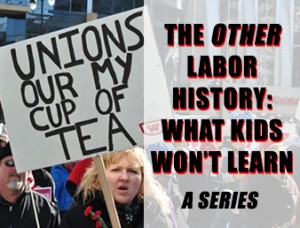WASHINGTON, D.C. – Unbiased educators would seek to teach about the good, the bad and the ugly of union history.
 While that’s likely not being done in California schools, which are celebrating Labor History Month in May, it’s not for a lack of available material.
While that’s likely not being done in California schools, which are celebrating Labor History Month in May, it’s not for a lack of available material.
The National Institute for Labor Relations Research has tracked union violence since 1975 and has published disturbing statistics.
MORE NEWS: Know These Before Moving From Cyprus To The UK
The group found since that year, 8,799 incidents of union-related violence have been recorded. Of those, 1,963 arrests and 258 convictions were found. The Institute culled its findings from local media reports.
In other words (assuming this is up-to-date), unions have a history of an incredible 231.5 incidents of violence each year.
Shockingly, less than 3 percent of those incidents result in an arrest and conviction, according to the Institute.
Why? The Institute explains:
Many of the news clips here point to one of the reasons: local law enforcement authorities (are) frequently overwhelmed by the number of participants in union violence (and) sometimes lash out by blaming the company targeted by union militants for trying to continue its legal operation in the face of illegal violence.
In addition to the powerlessness of local law enforcement, federal authorities are also hamstrung by the U.S. Supreme Court’s infamous Enmons decision. In the 1973 ruling, the High Court held that union officials may destroy property, assault employees, and even murder them, while escaping prosecution under federal extortion laws, so long as such violence is undertaken to secure what the Supreme Court called “legitimate” objectives, such as wage increases.
Meanwhile, an increasing number of states have enacted extortion laws exempting union officials from prosecution for the so-called “legitimate” objectives cited in Enmons.
Laws and courts are often stacked in favor of Big Labor, allowing union thugs to commit physical assault without facing punishment. Such is the union legacy.
To read more installments of “The Other Labor History: What Kids Won’t Learn,” click here.


Join the Discussion
Comments are currently closed.